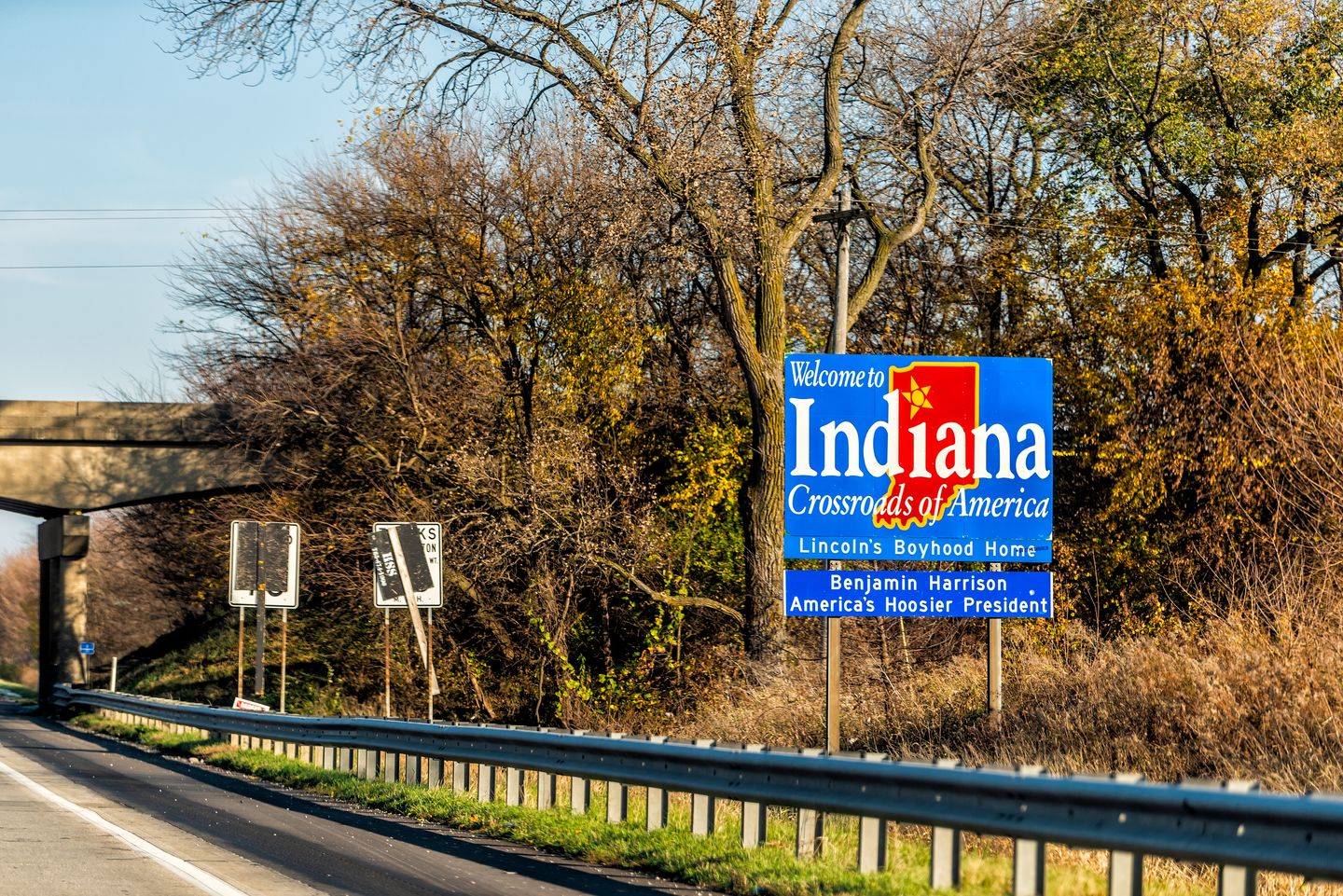
Indiana will soon begin studying the pros and cons of reconfiguring its border with Illinois, but it may have to do so without the participation of its neighbor.
Indiana Gov. Mike Braun signed legislation earlier this month creating the Indiana-Illinois Boundary Adjustment Commission, an 11-member panel scheduled to hold its first meeting no later than Sept. 1.
Under the measure, Mr. Braun, a Republican, would appoint six members and Illinois would name five. So far, however, Illinois Gov. J.B. Pritzker, a Democrat, has shown no interest in taking part, calling the commission a “stunt.”
Will Mr. Pritzker decide to cooperate in the spirit of interstate bonhomie? Don’t hold your breath, said Illinois state Rep. Brad Halbrook.
“I would expect them to call witnesses from Illinois to testify, but there won’t be any members [from Illinois] there on that panel because we would need somebody to appoint them,” Mr. Halbrook told The Washington Times. “I don’t think Indiana can say, hey, we want to appoint these people from Illinois.”
Even without representatives from the Land of Lincoln, the commission may still take action. Only six members are required for a quorum under House Bill 1008, sponsored by Indiana House Speaker Todd Huston.
The measure was inspired by the growing Illinois separation movement. Thirty-three of the state’s 102 counties have passed measures in the past few years in favor of exploring the possibility of splitting from Cook County, home of Chicago.
Many of those counties are situated in southern Illinois, on or near the state line with Indiana. They also tend to be rural and more conservative than the Democrat-dominated state government in Springfield.
Such counties would be a natural fit in red-state Indiana, which touts a Republican governor and GOP super-majorities in both legislative chambers.
“Illinois citizens have been held hostage against their will for two, three, four decades, and they’re fleeing in droves,” said Mr. Halbrook, a Republican who represents Shelby County, which voted in favor of the separation referendum.
“And I think the legislators in Indiana see what’s going on, and they want to make life better for people in Illinois, and they’ve offered up a solution,” he said. “So hopefully this is part of a big discussion that I hope will get the attention of legislators in Illinois.”
Mr. Halbrook introduced legislation in January that would have established the boundary commission in state law and required the governor to appoint commissioners, but the measure died without receiving a hearing in the Illinois General Assembly.
Despite the downstate discontent, Mr. Pritzker argued that Illinois residents would be worse off if they suddenly became Hoosiers.
“It’s a stunt. It’s not going to happen,” Mr. Pritzker told reporters after the bill was unveiled in January. “I’ll just say Indiana is a low-wage state that doesn’t protect workers, a state that does not provide health care for people when they’re in need, and so I don’t think it’s attractive for anybody in Illinois, where wages are higher where the standard of living is higher, and we do provide health care for people in need.”
Mr. Halbrook said the economic indicators tell a different story.
“The governor has called it a stunt and kind of slammed the people of Indiana, saying they didn’t take care of their people, and that they were a low-wage state,” he said. “But if you look at any of the numbers, all of our neighboring states are doing better than Illinois.”
Illinois gained 67,899 residents in 2023-24 after a decade of outmigration, causing the state to lose a congressional seat after the 2020 Census.
“Illinois population decline was curbed for the first time in 9 years following a massive influx of international migrants,” said Bryce Hill, Illinois Policy Institute director of fiscal analysis. “However, since 2020, 84% of Illinois communities have lost population.”
Why? He cited the state’s unfriendly economic climate, saying that Illinois has seen more than 70 tax hikes since 2010, while the unemployment rate is higher than the national average and job growth is lower.
“These problems, unfortunately, hit our down-state communities hardest,” Mr. Hill said. “What these residents crave is recognition and relief and that has spurned entities such as the commission.”
Loret Newlin, coordinator and director of the Illinois Separation Referendum, said she appreciated Indiana’s interest, but stressed that the referendum seeks to gauge interest in forming a new state, not joining an existing one.
“While it is great that Speaker Todd Huston recognizes that we are not represented in the Illinois legislature, his bill assumes everyone who voted to explore forming a new state without Cook County will happily become Hoosiers,” she said in an email. “While some welcome the possibility, others are saying, ’That is NOT what we voted for!’ The word ’Indiana’ does not, and has never, appeared in our Illinois Separation Referendum.”
Illinois residents aren’t alone. Efforts by blue-state denizens to carve out a separate state – or join a neighboring red state – are also underway in California, Colorado, Oregon and Washington.














